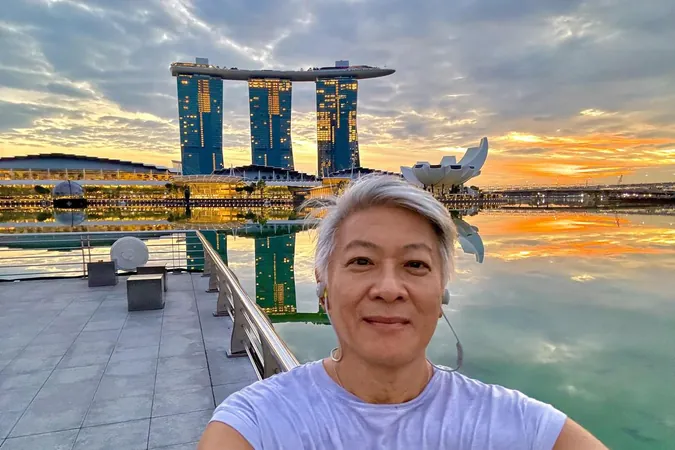
Easter Island's Surprising Connections: New Discoveries Challenge Isolation Myths
2025-07-07
Author: Nur
Easter Island: More Connected Than We Thought!
Recent archaeological research has shaken the foundations of our understanding of Easter Island, or Rapa Nui, revealing it was not the isolated paradise once believed. Instead, evidence suggests complex cultural exchanges among the islands of Polynesia, highlighting a vibrant web of connections.
From West to East: The Polynesian Expansion
Polynesia's colonization began with settlers migrating from Tonga and Samoa, rapidly spreading to the far reaches of the Pacific, including Hawaii, Rapa Nui, and New Zealand. Initially, it was assumed that after this wave of settlement, these distant islands, especially Easter Island, fell into a period of isolation.
Ritual Innovations Across the Islands
However, new insights reveal that despite their geographical separation, similar ritual practices and monumental structures emerged across East Polynesia. A prime example of this is the construction of marae—communal ritual spaces that have held significance throughout generations. In Rapa Nui, these sites featured the iconic moai sculptures, which adorned their temple platforms.
Groundbreaking Research Findings
Professors Paul Wallin and Helene Martinsson-Wallin from Uppsala University have re-evaluated archaeological findings and radiocarbon dating across East Polynesia, challenging the traditional view of Rapa Nui's isolation. Their research, published in the journal *Antiquity*, reveals a richer narrative of ritual development and exchange.
"While the west-to-east migration is established, the notion that Rapa Nui was solely colonized once and then became isolated is misguided," they assert. The researchers identified three significant phases of ritual activity: starting from the early burial and feasting practices, to the elaboration of ritual spaces in the form of marae, before entering an era of isolation that led to the development of powerful, monumental structures.
A New Perspective on Polynesian Interaction
The study indicates that the evolution of ritual sites was not linear but instead shaped by ongoing interactions. The earliest forms of ritual practice found their roots in Rapa Nui, which later influenced other regions in East Polynesia through established exchange networks.
Rethinking Polynesia’s Cultural Landscape
In conclusion, the findings highlight that while the population of Polynesia originated from the west, the subsequent development of cultural and ritual practices was much more intricate. The robust interaction networks between the islands meant that new ideas—especially those concerning rituals—were not just passed from west to east, but also flowed back from the eastern islands.
This groundbreaking research invites us to rethink what we know about the movement of ideas and cultural exchanges in East Polynesia, revealing a fascinating tapestry of interconnected histories.




 Brasil (PT)
Brasil (PT)
 Canada (EN)
Canada (EN)
 Chile (ES)
Chile (ES)
 Česko (CS)
Česko (CS)
 대한민국 (KO)
대한민국 (KO)
 España (ES)
España (ES)
 France (FR)
France (FR)
 Hong Kong (EN)
Hong Kong (EN)
 Italia (IT)
Italia (IT)
 日本 (JA)
日本 (JA)
 Magyarország (HU)
Magyarország (HU)
 Norge (NO)
Norge (NO)
 Polska (PL)
Polska (PL)
 Schweiz (DE)
Schweiz (DE)
 Singapore (EN)
Singapore (EN)
 Sverige (SV)
Sverige (SV)
 Suomi (FI)
Suomi (FI)
 Türkiye (TR)
Türkiye (TR)
 الإمارات العربية المتحدة (AR)
الإمارات العربية المتحدة (AR)